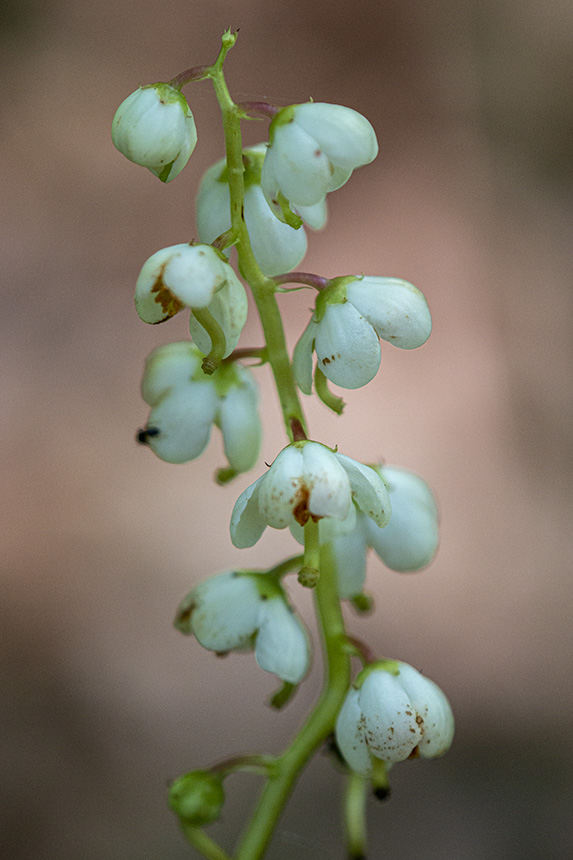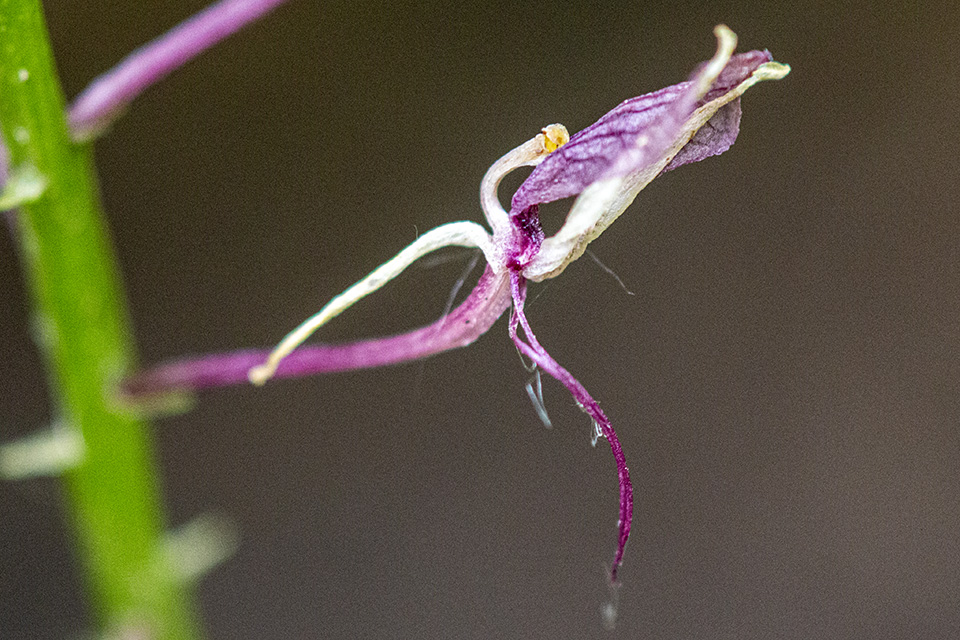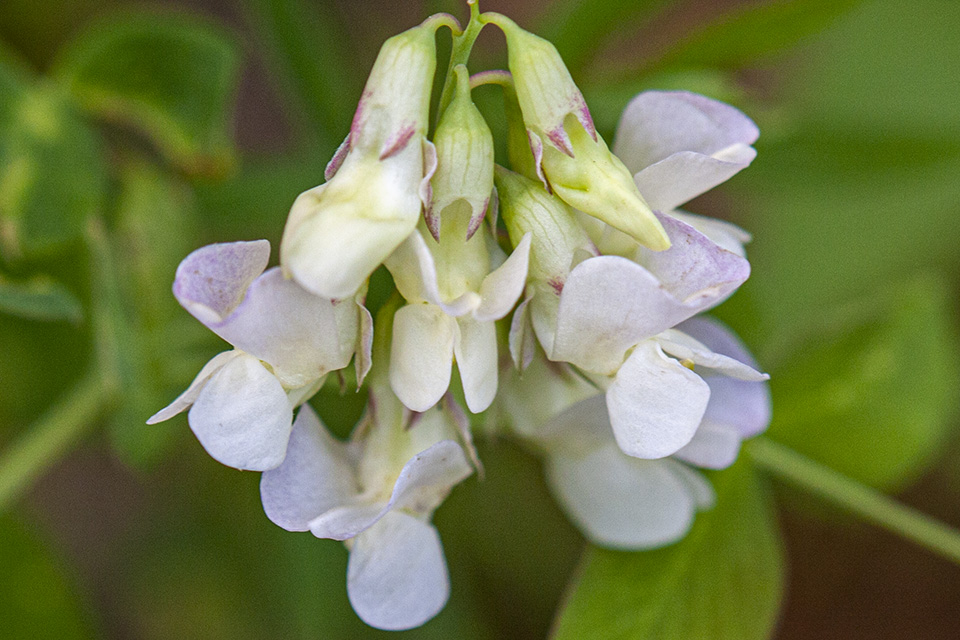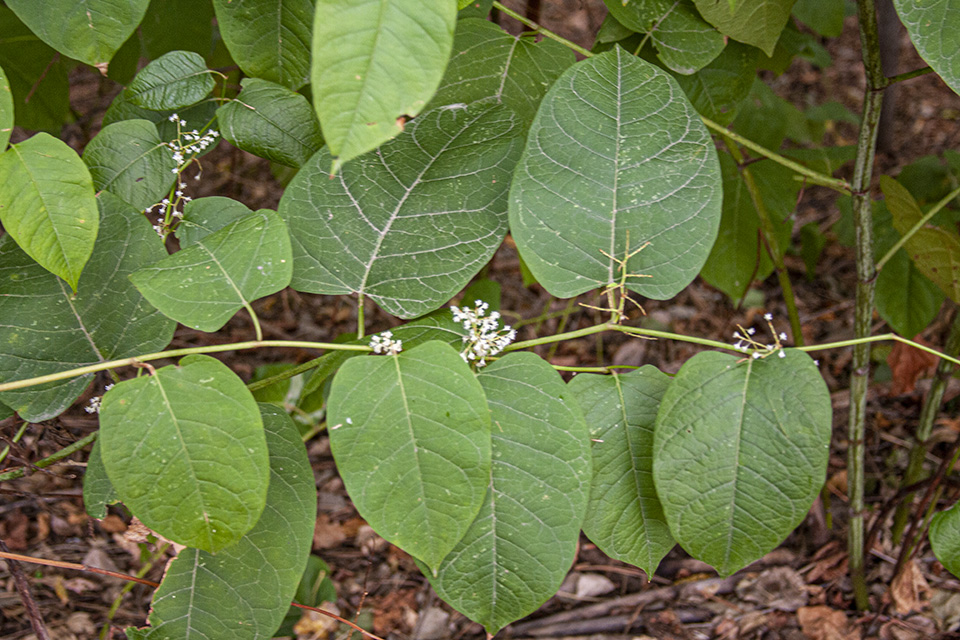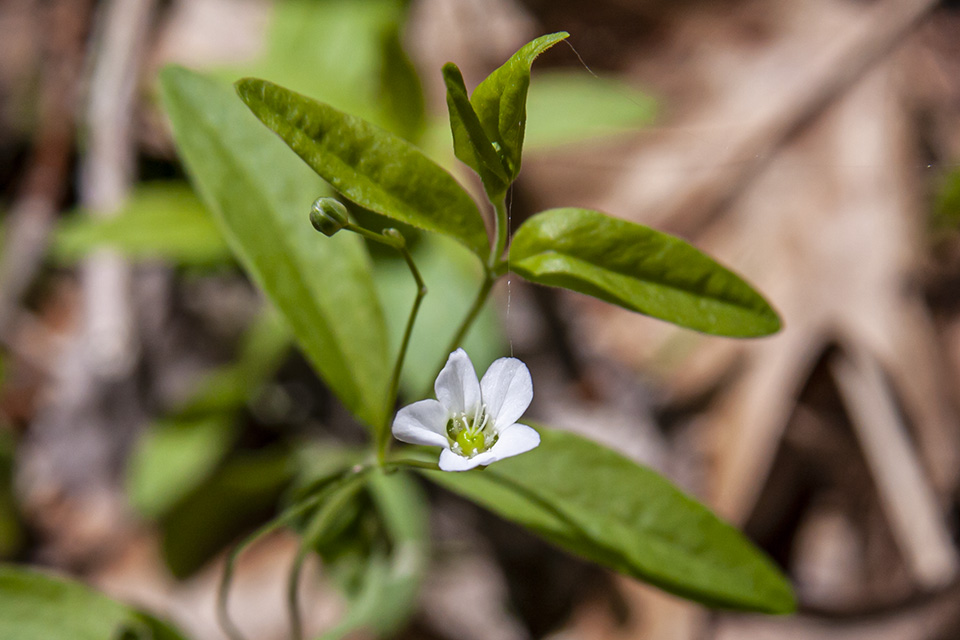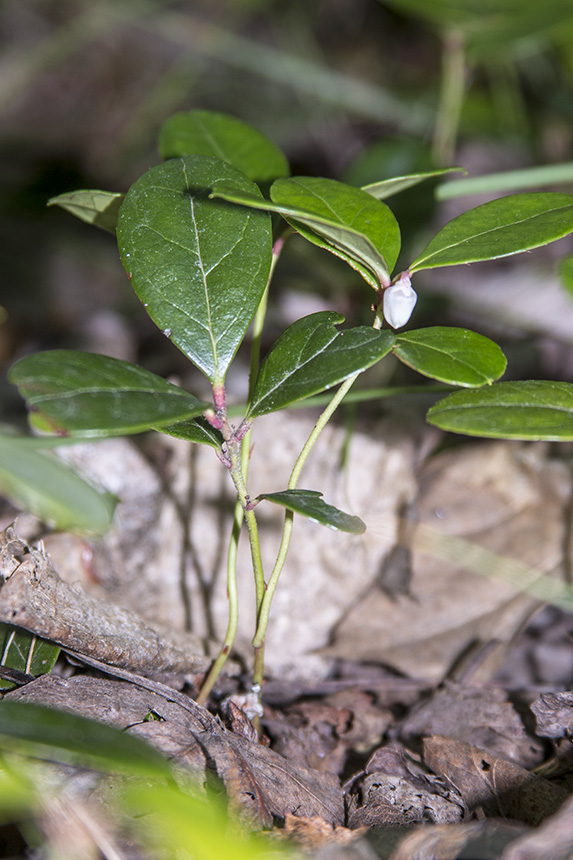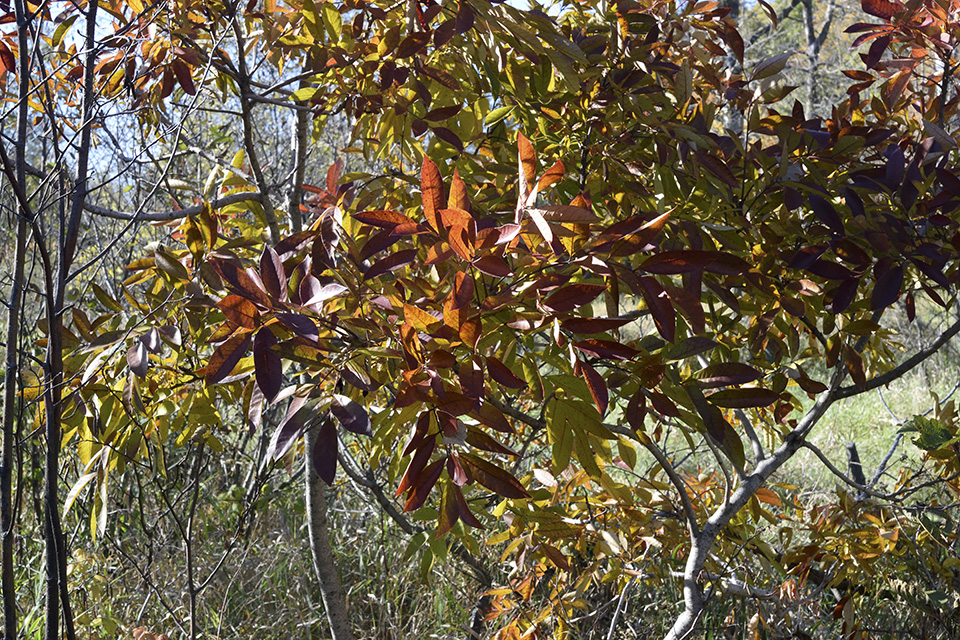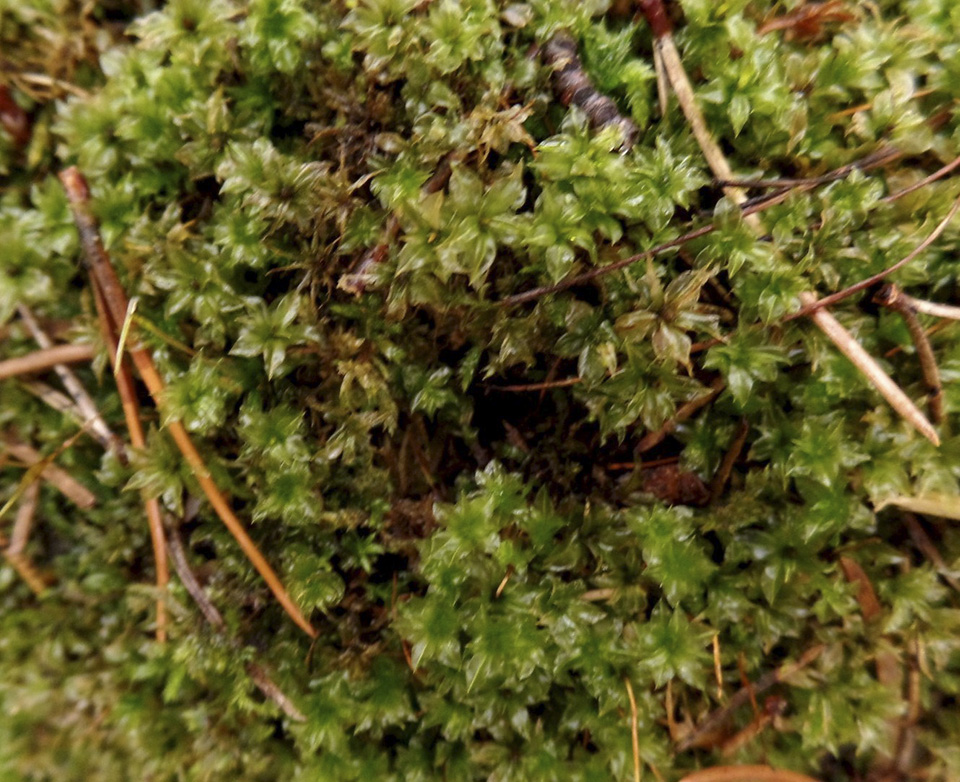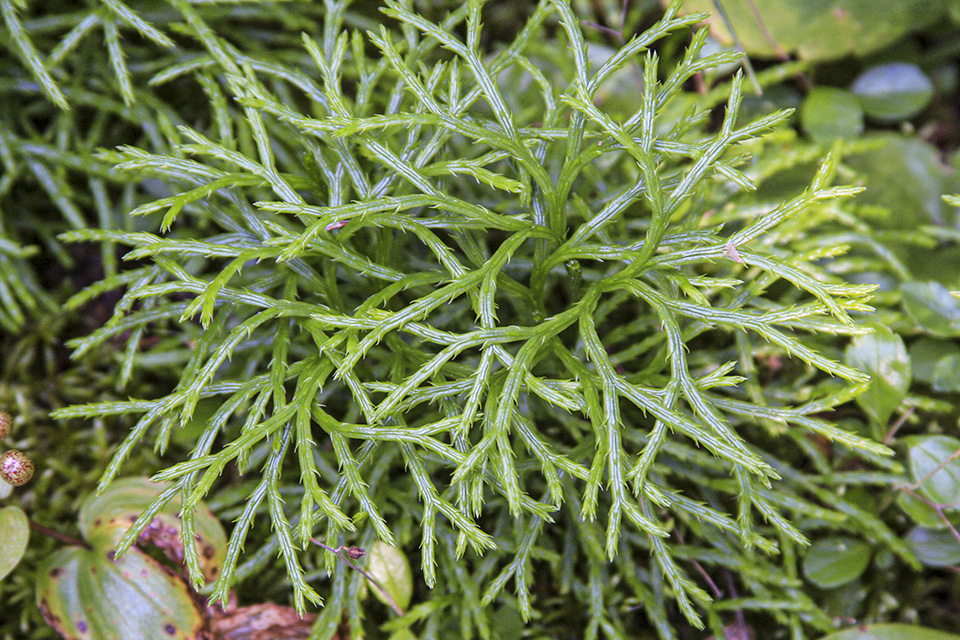
There are seventeen species of Diphasiastrum worldwide, five in North America, two in Minnesota. Fan clubmoss (Diphasiastrum digitatum) is the most abundant Diphasiastrum species in North America. It is common in eastern and north-central Minnesota. It grows in well-drained, moist to dry soil, in dappled sunlight to light shade, in open, upland, coniferous and deciduous woodlands, thickets, and sandy fields.
Fan clubmoss is a low growing shrubby evergreen. It produces both horizontal and erect stems, numerous branches that are held parallel to the ground, and cones at the end of long stalks. It is distinguished from other club mosses by horizontal stems that lie on the surface of the ground; branches that are flattened, are held parallel to the ground, and do not have narrow areas marking the start and end of annual growth; four ranks of leaves, those on the underside much smaller than those on the upper side; and sterile tips on about half of the cones.
Club mosses in the genus Diphasiastrum readily crossbreed with other species in the same genus. The hybrids that are produced are fertile. Fertile hybrids are common in the animal kingdom but rare in the plant kingdom.

